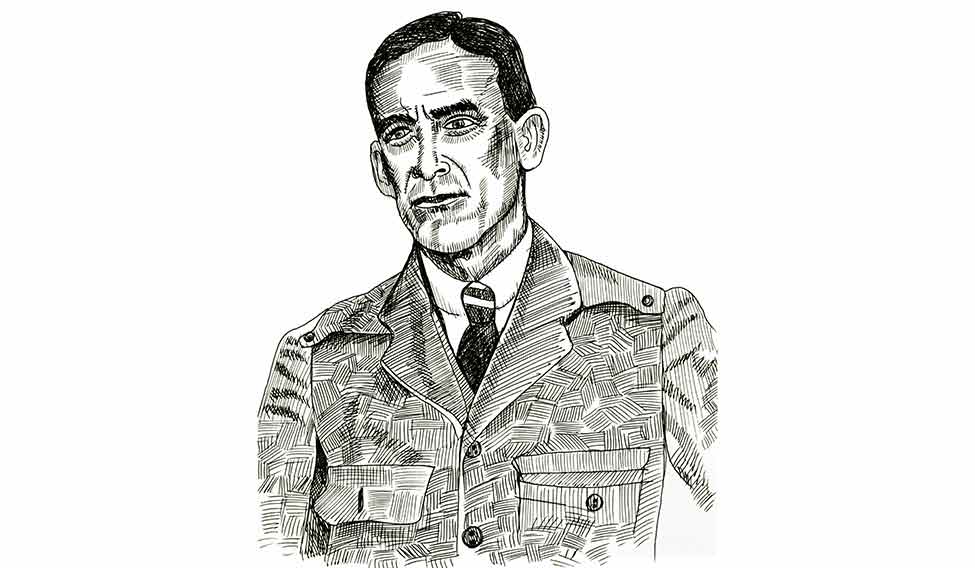
Archaeological surveys under the leadership of Sir John Marshall established the antiquity of India’s civilisation by pushing back the then existing earlier dates by another 3,000 years. Marshall’s surveys included Buddhist sites, monuments of the Indo-Greeks and the cities of the Indus civilisation. It is said, he left India 3,000 years older than he found her.
The outcome of his survey projects brought out a large set of cultural dimensions.
During Marshall’s time many of the locations of cultural importance had been exposed through the contributions of his predecessors, especially Sir Alexander Cunningham, the founding father of Indian archaeology. Marshall's noteworthy contributions are the detailed reporting of his fieldwork, which included both explorations and excavations. For instance, Mohenjodaro and the Indus civilisation (three volumes), monuments of Sanchi (two volumes) and Taxila (three volumes) are still considered works that reveal the potential of archaeological operations in reconstructing the past.
Marshall's findings and studies exposed a more ancient urban civilisation about which there was no historical awareness till then. Thus it was he who founded the scientific study of archaeologically supported historiography in India.
Archaeologists are often cautious or astute in avoiding the intangible components of culture because such interpretations can be very subjective and misrepresentative in nature. But, Marshall was bold enough to look at some of such components, especially some antiquities, which would have been otherwise omitted by many, and tried to bring out more elements of life into the culture or civilisation. This is clearly visible in his Mohenjodaro volumes, where he tried looking at many antiquities, generally considered minor ones, and situated them in the life of the people using the knowledge from the present, thus employing the logic of moving from known to unknown.
Marshall is severely criticised for drawing the aforesaid inferences from the practices of Hinduism and also for ignoring the principle of stratigraphy in his archaeological research. One of the consequences of his ignoring stratigraphic concepts still prevents Indus archaeologists from assigning a chronological order to the Indus valley seals, thus making it impossible to work out the evolution of the inscribed Indus scripts on them and thereby weakening its chances of decipherment in a convincing way. But, another highlight of his work is that he had the vision to incorporate scientists from other different streams to work on the artefacts suggesting that he firmly believed that the story of evolution of human behaviour would remain incomplete unless their surrounding environment and their knowledge of various raw-materials are properly understood. This further reminds us that Marshall, though he received a lot of criticism from the later archaeologists, did do his level best to present culture or civilisation not fully in the materialistic form, but in a coherent and lively format.
Born in Chester, England on March 19, 1876, Marshall completed his education at King’s College, Cambridge. He served as director general of Archaeological Survey of India from 1902 to 1928. At the ASI, he was instrumental for the enactment of the ancient monuments and preservation act, 1904. The act, for the first time, provided effective preservation and government authority over monuments of cultural importance.
Besides the aforesaid activities, he laid the foundation stone for Taxila Museum in 1918. He also introduced the programme of cataloguing and conserving ancient monuments and artefacts. Even a casual look at the Marshall collections of photographs of monuments and ancient settlements, currently available in the Oriental Museum, Durham, can act as a very important tool to appreciate the setting of monuments in their natural environment and the significant relationship between the monument and its neighbouring ecology, which is disappearing because of the recent rapid urbanisation.
Most of the principles of archaeological conservation advocated by Marshall are still followed by modern conservationists. The Indians, for the first time, were formally allowed to participate in the investigations of their own past during the time of Marshall. Marshall had to face severe difficulties due to the budget cuts and also the questioning of the relevance of past investigations during the World War time; however, his praiseworthy efforts saved his institution and benefited the country. Through his pioneering efforts he situated the age of the Indus civilisation and the Mauryans within the world context. He was knighted in 1914.
Krishnan is head of the department of archaeology and ancient history, MS University of Baroda.





